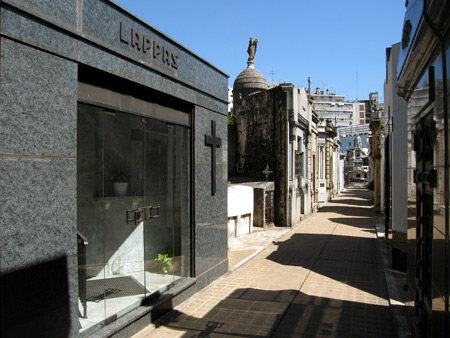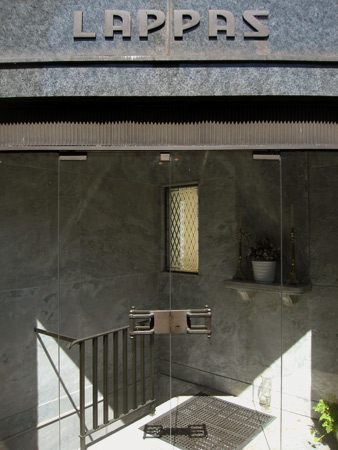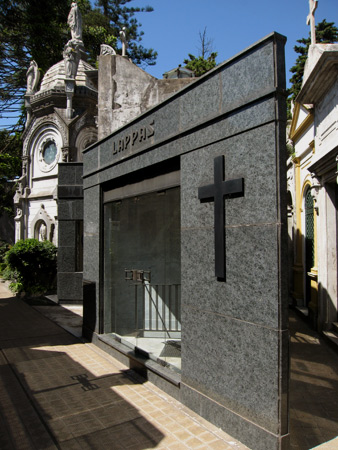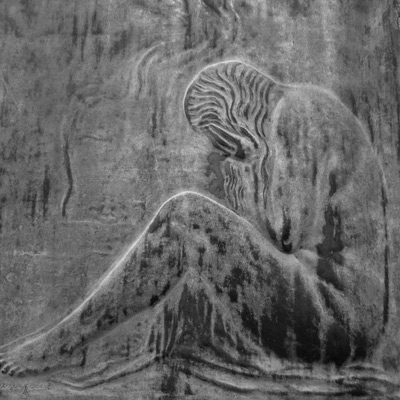
Documenting Recoleta Cemetery in Buenos Aires since 2007
Only those who have served Argentina in its top positions reserve the right to be buried with the nation’s flag. Most often used for Presidents, the flag can also be found covering the casket of high-ranking military officers:
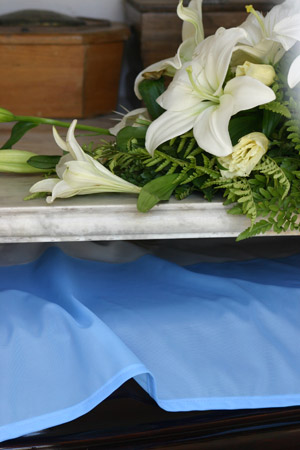
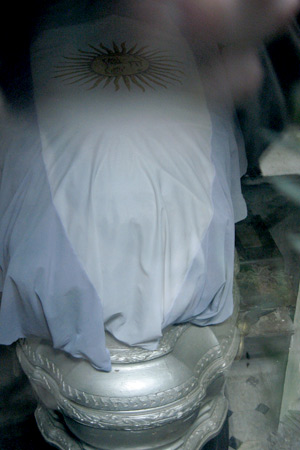
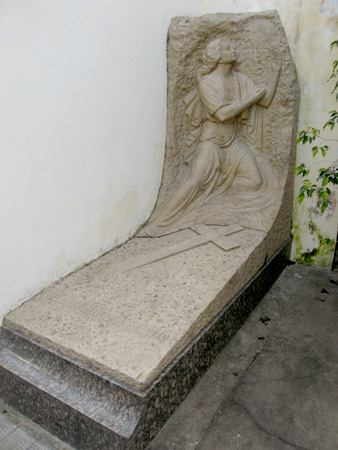
Art fans know that Luis Perlotti was one of the most important sculptors in Argentina during the 20th century. Most of his works date from the 1920s to 1940s, so his style tends toward Art Deco. Another big influence on Perlotti was the indigenous population of Argentina. He was killed in a car crash in Uruguay, & his house/workshop in the neighborhood of Caballito was donated to Buenos Aires to use as a museum. I tried to go several times before it was shut down “for renovation.” Last time I checked, the whole house had been demolished. Who knows what they’re doing now.
But most people may not be aware that there’s a lot of Perlotti to be seen in Recoleta Cemetery. Chacarita Cemetery has quite a bit too. Evidently he was so popular that families commisioned a number of works by him to remember their loved ones.
The famous Firpo statue was done by Perlotti:
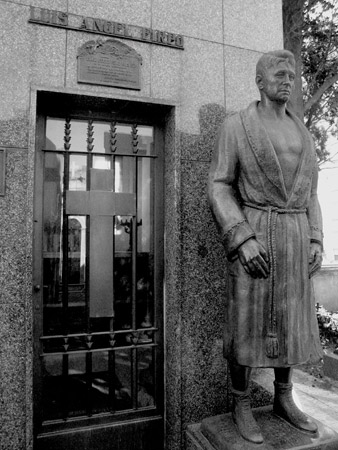
Plaques by Perlotti are the most abundant. Just look for the signature:
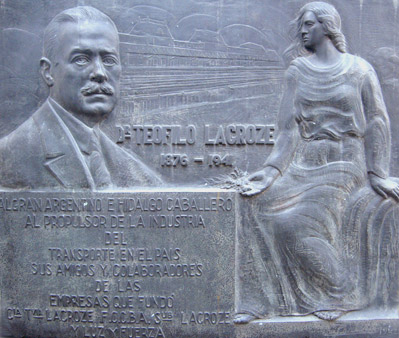
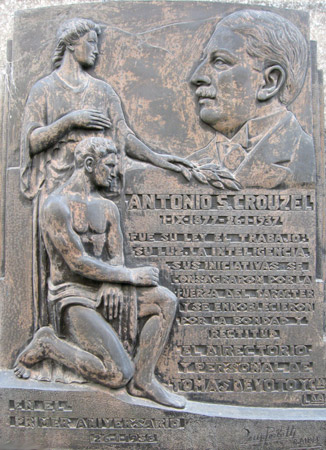

For me, his most significant piece in Recoleta Cemetery is a 1946 relief for Francisca Olivera de Pignetto. Similar to a monument for author Alfonsina Storni in Mar del Plata, Francisca’s gown flows beautifully & the fading image of someone she loved expresses a lot of emotion:
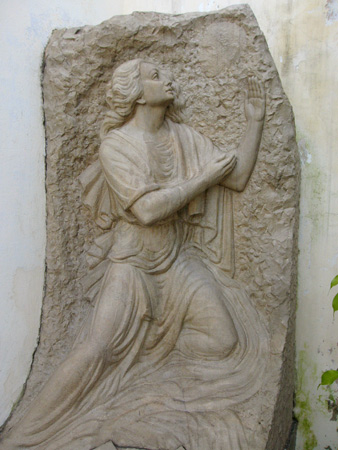
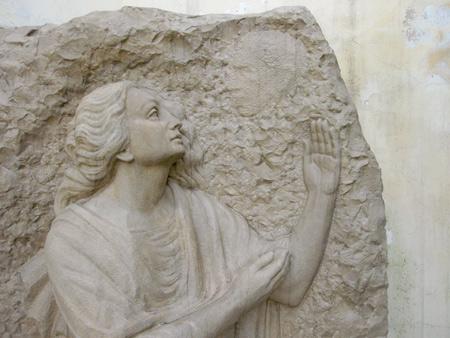
The bulk of Perlotti’s art is on display at the city’s central museum office in Puerto Madero. He has other major works scattered around Buenos Aires (seek out the sculpture group in Parque Los Andes in the barrio of Chacarita) as well as in cities throughout the entire country.
Update (17 Apr 2013): The Museo de Esculturas Luis Perlotti has reopened! Formerly located in the sculptor’s house/workshop, conditions became so bad that works were transferred to Puerto Madero while a replacement museum was built. His body of work can now be seen in a nicely lit space in the barrio of Caballito:




The family name may have been removed long ago on this vault, but it remains one of the most stunning pieces of architecture in Recoleta Cemetery. Several sources attribute it to the DeFerrari family, but marks left by previous letters on the façade are too difficult to read for confirmation of the original owners.
Art Deco was all the rage during the 1920s & 1930s—the shapes & massive statue size pin it to that era. Also, the crucifixion mosaic has definite Byzantine inspiration. Flat, 2-D figures incorporated well into Art Deco & Neo-Byzantine became one of Art Deco’s many offshoots:
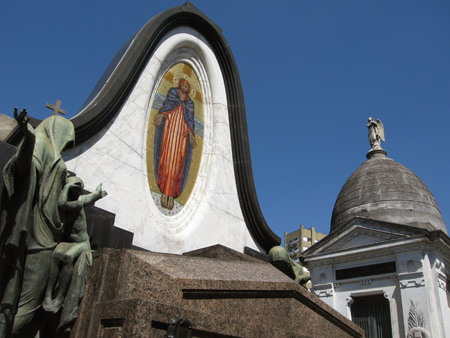
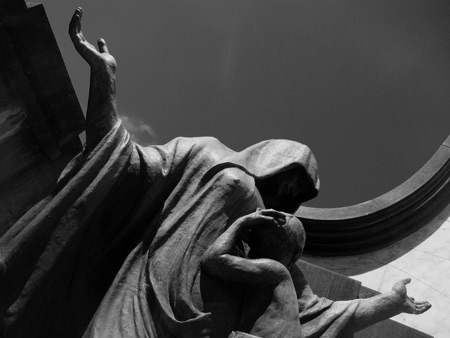
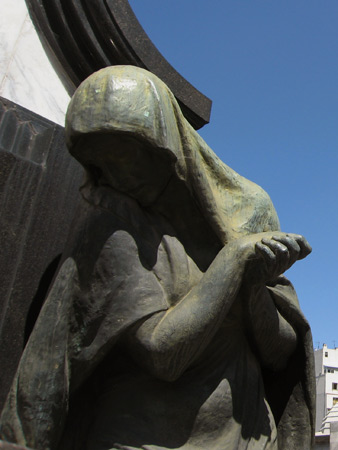
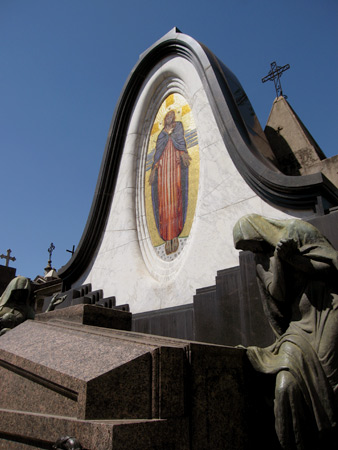
Another example of this interesting Art Deco/Neo-Byzantine style is a church built by one of the most prolific & influential architects in Buenos Aires, Alejandro Christophersen. The Santuario Nacional de Santa Rosa de Lima (at Avenida Belgrano & Pasco) was built from 1928 to 1934 & has similar mosaics inside along with a unique exterior for BsAs. For more photos of this building, read about it here: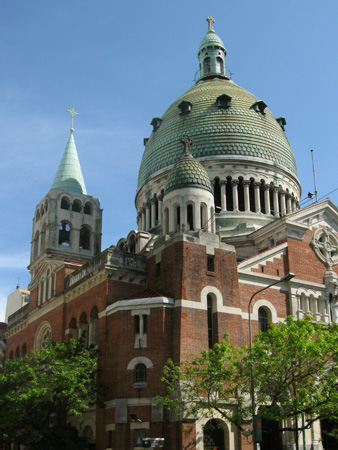
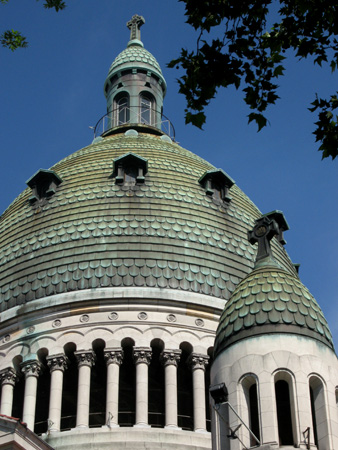
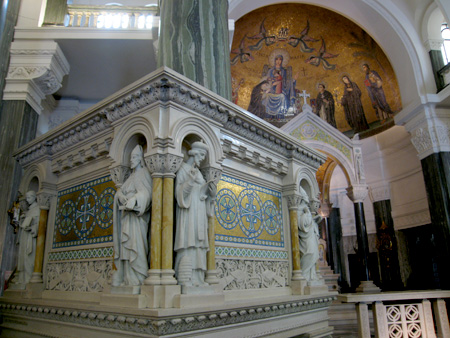
Update, Nov 2008: Art Deco architect Alejandro Virasoro designed the vault, & the original owners were the Defferrari family. See post #259 for more details.
2 CommentsNaturally, one of the top silversmith families in Argentina has their family tomb in Recoleta Cemetery. They’ve dealt primarily in housewares (jars, vases, cutlery & the like) since 1887, but the font used for the business name is distinctly Art Deco:
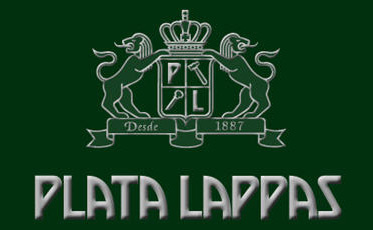
Their largest store is on Avenida Santa Fe with a smaller locale across from Galerías Pacífico on Calle Florida:
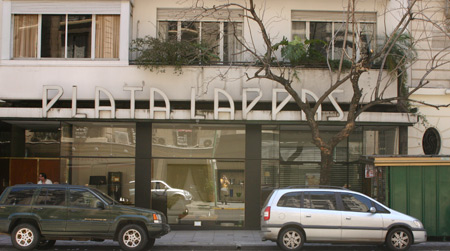
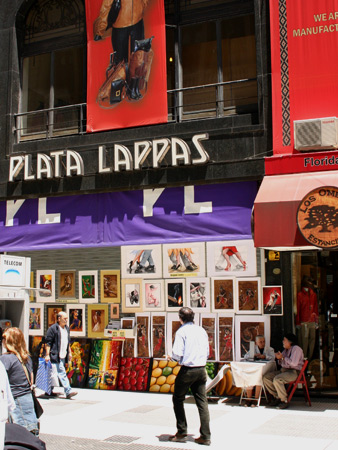
Located on one of the diagonal avenues not far from the center, the Lappas family vault takes a triangular shape. While it may not be covered with silver, the font is easily recognized:
